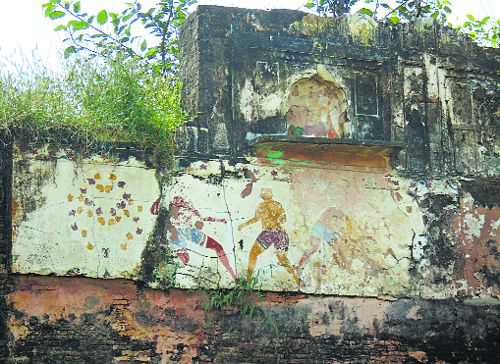Sikh Rajas who fought for sovereignty of Ladwa
Virender Singh Dhillon
Ladwa, a small ‘qasba’ of colonial antiquity about 20 km away from the district headquarters of Kurukshetra, is connected to patriotic Raja Gurdit Singh and Raja Ajit Singh, the father-son duo who fought for its independence and sovereignty from the British. The British historical records and their readings by colonial and Indian historians termed these rajas as ‘Rebels’, but, on the contrary, they were the true sons of the soil who fought for their motherland well before the first war of Indian independence in 1857. In the turbulent times of the second half of the eighteenth century when the Sikhs ‘misls’ were trying to gain ground in the countryside by destroying Mughal strongholds in the northern part of South-East Punjab, there arose Raja Gurdit Singh and his son Raja Ajit Singh, who built their small princely state of Ladwa.
According to Sir Lepel Henry Griffin, the celebrated author of the book “The Punjab Chiefs”, the career of Sardar Gurdit Singh of Ladwa started in 1758, when he joined the forces of Mit Singh Rohela. Tracing the ancestry of Raja Gurdit Singh of Ladwa, Sir Griffin writes, “His family belonged to the Sansi Jats of Bain Poin village, 10 miles south of Amritsar. He was affiliated to the Krora Singhia (Sikh Misl) confederacy”. Raja Gurdit Singh along with other Sikh chiefs fought against Shah Zaman Durani of Kabul when he attacked the town of Jind in 1798. He also fought on the side of Maratha Sardar Sindhia against English General Lake in Delhi in September 1803 (General Lake captured Delhi on September 11, 1803). When in March 1805, the British Commander-in-Chief proclaimed general amnesty to all those Sikh chiefs who would agree to observe peace and abstain from operations against the English, Raja Gurdit Singh did not bow down and defied the British authority. He was the only exception among the Sikh chiefs in the cis-Sutlej area who fought against the British till his last breath. The British strengthened the Karnal garrison and built a cantonment in 1806 to face any adverse situation and the wrath of Raja Gurdit Singh.
Raja Gurdit Singh expanded his estate and his manor consisted of Ladwa (94 villages); Baddowal (26); Jagraon (6); Paddhi (18); Shekpoora (9); Singhor (20); Indri (town and 11 villages); and Sikandrah (9 villages). His army consisted of 1,530 cavalry; 400 infantry men; six small guns and two big guns. A number of jagirdars served under him: Dal Singh, Dunna Singh, Mahna Singh, Sahib Singh, Ugah Singh and the family of Diwan Singh. He collected duties and customs from various Dak Chowkis amounting to 12,200 silver rupees. The land revenue from villages collected from his estate was of 205,350 silver rupees in 1808. He had three important forts in his possession at Ladwa, Indri and Karnal. His fort of Karnal was captured by the English in 1805 when they planned to set up a cantonment in Karnal around 1805-06.
After Raja Gurdit Singh's death, his son Ajit Singh succeeded him. Ajit Singh upgraded his fort at Ladwa to face the danger of the British. During the First Sikh war in 1845, he fought on the side of the Sikh army against the British. He was defeated and his estate of Ladwa was confiscated in 1846. “The Raja of Ladwa, with an estate of 10,000 pounds a year, almost openly avowed his treason, and, after a time, went over to the enemy (of the British Raj) with all his troops and artillery”, reads the Dispatch of the Governor General, sent to London on November 17, 1846. On September 22, 1847, through a ‘sanad’, the British awarded his house at Haridwar to the Raja of Patiala. He was taken into custody and sent as a prisoner to the Allahabad fort. He contrived to escape, after killing his keeper, and after long wanderings in hills, is supposed to have died in Kashmir. His children, who held in joint tenure eight villages along with Bhadour sardars, were dispatched by the British to these villages. Thus, the brave sons of Ladwa lost in obscurity have little trace except their fort and so their reminiscences.
(The writer teaches history at Maharaja Agrasen College, Jagadhri)









